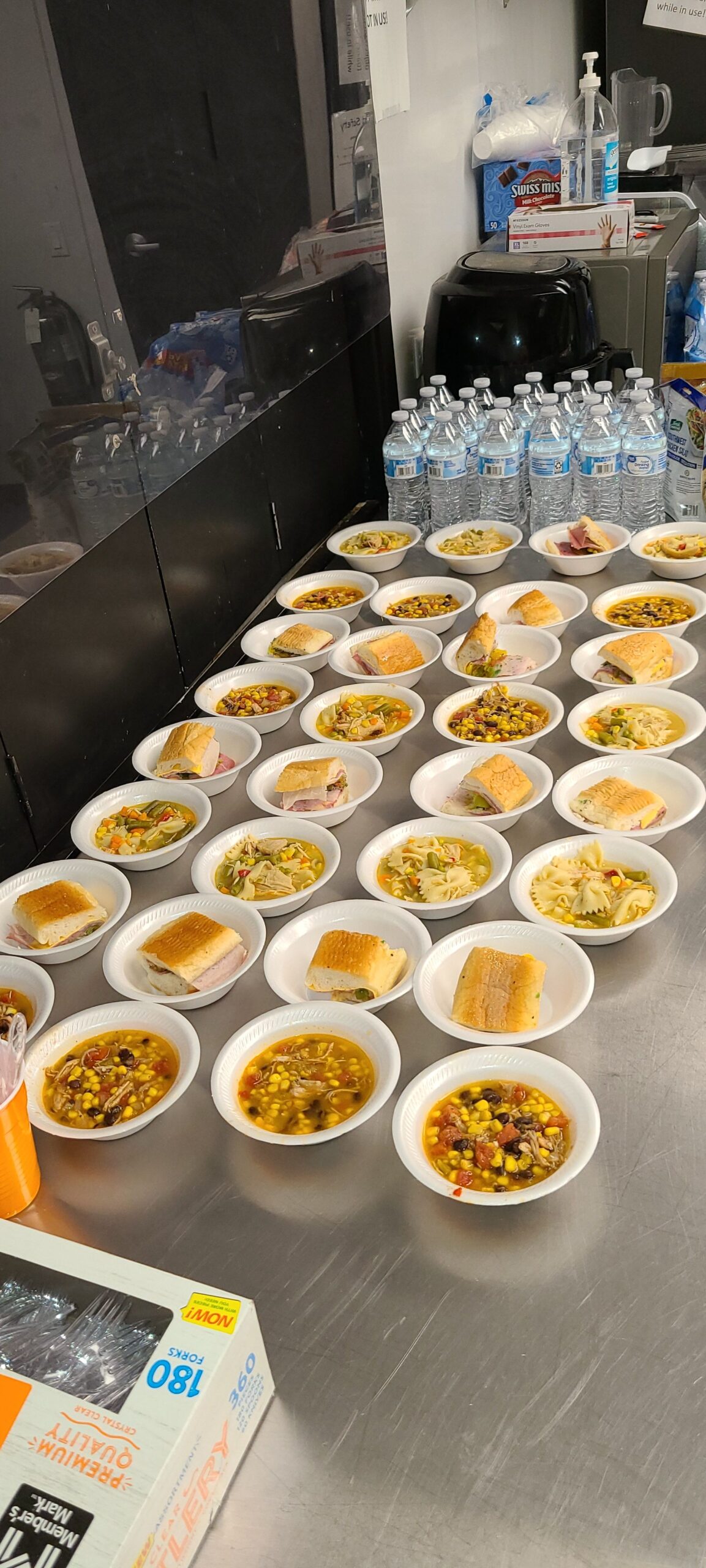The inception of A.L.O.T.’s vision traces back to 2009 when President Obama’s call prompted churches and non-profit organizations to initiate programs for the youth and communities. This led to our collaboration with The Night Ministry of Chicago, a partnership that began with training and has since become a significant part of our legacy. The journey has been immensely fulfilling.

LAS VEGAS DATA:
Las Vegas has the 2nd highest rate of unsheltered unaccompanied youth in the nation. NV has the highest rate of unsheltered unaccompanied youth in the nation. 9 out of 10 or 92% homeless youth are unsheltered in Clark County on any given night. 1,081 of homeless youth are between 18 and 24.
CHICAGO DATA:
In 2022, 5,839 unaccompanied youth in Chicago experienced doubled-up homelessness, and 1,915 experienced street and shelter homelessness. The Chicago Coalition to end Homelessness estimates that 12,000 unaccompanied youth experience homelessness in “Chicago”




A.L.O.T Feeding homeless teens a homemade nutritious meal is a crucial effort for several reasons:
- Basic Needs: Like anyone else, homeless teens have fundamental needs for food and nutrition. Access to a regular meal is essential for their physical health and well-being.
- Supportive Environment: Providing food can create a safe and welcoming space where homeless teens feel cared for and supported. This environment can foster a sense of community.
- Education and Development: Proper nutrition is vital for cognitive functioning and growth. Feeding homeless teens helps ensure they can focus on their education and personal development.
- Addressing Poverty: Many homeless teens come from families facing economic hardship. Programs that provide meals help alleviate some of the stress related to poverty.
- Building Trust: Fostering relationships through food can help social services providers build trust with homeless teens, making it easier to offer additional support, such as counseling or housing assistance.
- Community Engagement: Organizations that serve food often engage volunteers and the wider community, raising awareness about youth homelessness and encouraging broader support for social issues.
- By addressing hunger, we can help homeless teens get the support they need to navigate their challenges and work towards a more stable future.
LAS VEGAS DATA:
Las Vegas has the 2nd highest rate of unsheltered unaccompanied youth in the nation. NV has the highest rate of unsheltered unaccompanied youth in the nation. 9 out of 10 or 92% homeless youth are unsheltered in Clark County on any given night. 1,081 of homeless youth are between 18 and 24.
CHICAGO DATA:
In 2022, 5,839 unaccompanied youth in Chicago experienced doubled-up homelessness, and 1,915 experienced street and shelter homelessness. The Chicago Coalition to end Homelessness estimates that 12,000 unaccompanied youth experience homelessness in”
A.L.O.T Feeding homeless teens a homemade nutritious meal is a crucial effort for several reasons:
- Basic Needs: Like anyone else, homeless teens have fundamental needs for food and nutrition. Access to a regular meal is essential for their physical health and well-being.
- Supportive Environment: Providing food can create a safe and welcoming space where homeless teens feel cared for and supported. This environment can foster a sense of community.
- Education and Development: Proper nutrition is vital for cognitive functioning and growth. Feeding homeless teens helps ensure they can focus on their education and personal development.
- Addressing Poverty: Many homeless teens come from families facing economic hardship. Programs that provide meals help alleviate some of the stress related to poverty.
- Building Trust: Fostering relationships through food can help social services providers build trust with homeless teens, making it easier to offer additional support, such as counseling or housing assistance.
- Community Engagement: Organizations that serve food often engage volunteers and the wider community, raising awareness about youth homelessness and encouraging broader support for social issues.
- By addressing hunger, we can help homeless teens get the support they need to navigate their challenges and work towards a more stable future.
